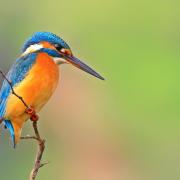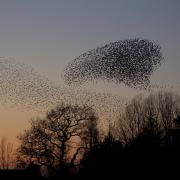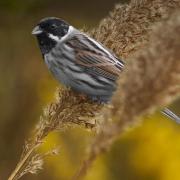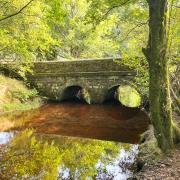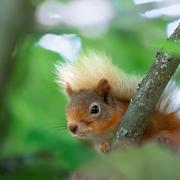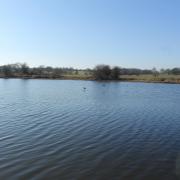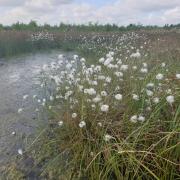Noisy toads, exotic dragonflies and short-eared owls – just a few examples of the wonderful wildlife in Cumbria, reports Charlotte Rowley.

Hutton Roof Crags This Cumbria Wildlife Trust nature reserve contains some of the best areas of limestone pavement in Britain, and has many unusual plants and animals. In summer look for wild plants like angular Solomon’s seal, lily of the valley and dark red helleborine. In autumn the nature reserve is alive with flocks of long-tailed tits, redwing, fieldfare and mistle thrush. Hutton Roof Crags is near Burton-in-Kendal, to find out more about how to get there visit www.cumbriawildlifetrust.org.uk

Foulshaw Moss White-faced darter dragonflies, round-leaved sundew bog plants and majestic ospreys are just some of the rare wildlife that can be spotted at this restored raised peatbog. Visually akin to an African savannah this expanse of wilderness is in fact very wet with board walks for visitors to keep your feet dry. Foulshaw Moss is near Witherslack, to find out more about how to get there visit www.cumbriawilldifetrust.org.uk

North Walney With stunning mountain and sea views, this is the place to stretch your legs and ‘get away from it all’ - and there’s always the chance you might spot some remarkable wildlife. The nature reserve’s most famous resident is the noisy natterjack toad. These nocturnal amphibians are rarely seen, but during the spring mating season, males can often be heard calling at dusk. North Walney is at the top of Walney Island off Barrow-in-Furness, to find out how to get there visit www.gov.uk/government/publications/cumbrias-national-nature-reserves

South Walney With stunning views across Morecambe bay, this shingle island reserve is full of wildlife and a fantastic place for bird watching. The nature reserve has recently undergone restoration work to improve the sand dunes and create better habitats for coastal birds. There’s a £3 entry fee for visitors who are not members of Cumbria Wildlife Trust. South Walney is found on the bottom end of Walney Island of Barrow-in-Furness, for information on how to get there visit www.cumbriawildlifetrust.org.uk

Drumburgh Take the short walk from the car park to a viewing platform where you’ll find a beautiful carving showing all the wildlife that can be found on this lowland peat bog. Much of the life here is on the wing with rare large heath butterflies in summer and snipe and short-eared owls in winter. The nature reserve is one mile south of Drumburgh village on the Solway coast, for more information visit www.cumbriawildlifetrust.org.uk

Geltsdale Set in the beautiful North Pennines Area of Outstanding Natural Beauty, Geltsdale is home to black grouse, birds of prey and breeding wading birds and is ideal for walking. There are four waymarked trails leading from the car park at Howgill. Look out for barn owls and short-eared owls hunting in the evening. Geltsdale is near Brampton, for information on how to get there visit www.rspb.org.uk

Smardale Gill This nature reserve lies in a beautiful and dramatic location running 3.5 miles along the disused Tebay to Darlington railway line. It is one of only two places in England you can see the Scotch argus butterfly and is home to other unusual butterflies such as dark green fritillary, northern brown argus and dingy skipper. Smardale Gill is near Kirkby Stephen, for more information on how to get there visit www.cumbriawildlifetrust.org.uk

Clints Quarry When industry moved out of this limestone quarry wildlife moved in, especially orchids which enjoy the different conditions the old trackways and spoil heaps create. Ravens nest in the cliffs, newt and frogs breed in the ponds and woodland birds make the most of this quiet and sheltered nature reserve. Clints Quarry is just north of Egremont, to find out more visit www.cumbriawildlifetrust.org.uk

Watchtree The nature reserve here was created in 2004 following a series of previous uses as agricultural land, an airfield and a burial site for animals during the foot and mouth crisis. Now it has a range of wildlife habitats including hay meadows, ponds and a woodland. Watchtree lies between Carlisle and Wigton, for more information on how to get there visit www.watchtree.co.uk

Hay Bridge Nature Reserve With woodlands, grasslands, tarns, raised bog, riverbanks and fell this nature reserve is probably the most diverse in Cumbria. To visit you can become a member at £15 per family or £10 per single person per year, or contact the Warden for one-off visits. Hay Bridge is owned and managed by the John Strutt Conservation Foundation and lies in the Rusland Valley, to find out more about how to get there visit www.haybridgereserve.org.uk
There are lots of footpaths to explore and several hides which look out over a tarn and wetland, perfect for bird watching.












